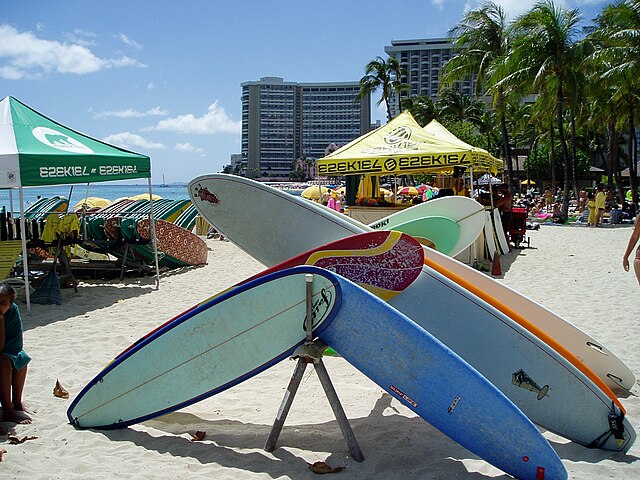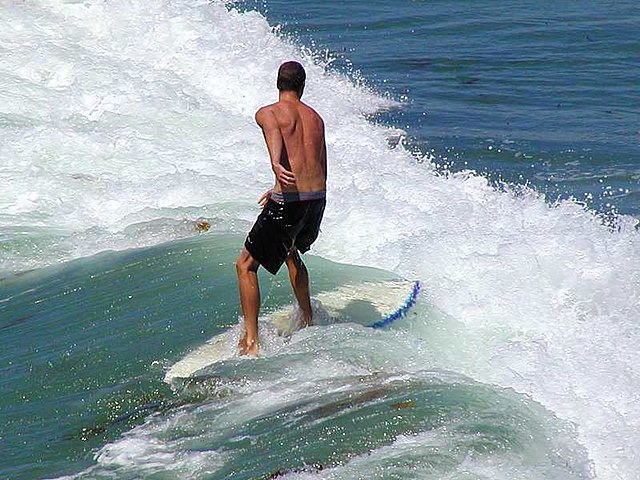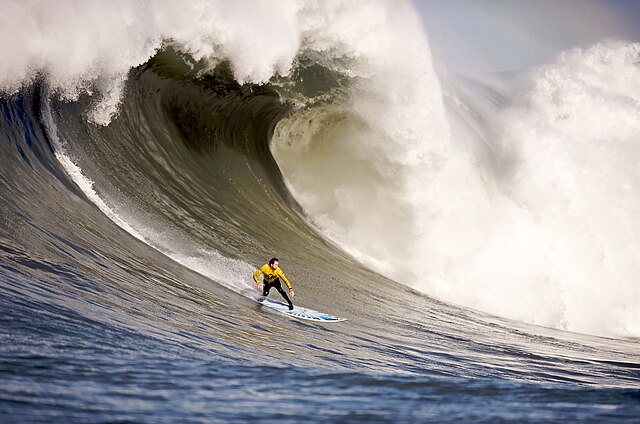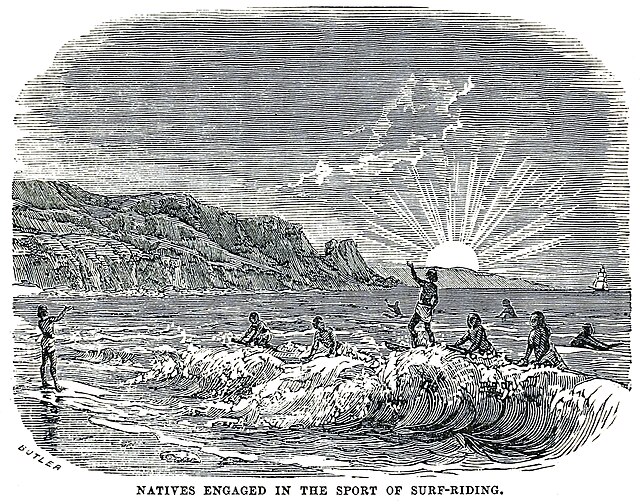A surfboard is a narrow plank used in surfing. Surfboards are relatively light, but are strong enough to support an individual standing on them while riding an ocean wave. They were invented in ancient Hawaii, where they were known as papa he'e nalu in the Hawaiian language, and were usually made of wood from local trees, such as koa. They were often over 460 cm (15 ft) in length and extremely heavy. Major advances over the years include the addition of one or more fins (skegs) on the bottom rear of the board to improve directional stability, and numerous improvements in materials and shape.
A stack of boards in Waikiki during a surf competition.
A chart showing various shapes of the bottoms of surf boards.
A man standing on a board as the wave passes under him.
Nubster Fin Seen In Middle
Surfing is a surface water sport in which an individual, a surfer, uses a board to ride on the forward section, or face, of a moving wave of water, which usually carries the surfer towards the shore. Waves suitable for surfing are primarily found on ocean shores, but can also be found in standing waves in the open ocean, in lakes, in rivers in the form of a tidal bore, or in wave pools.
Mavericks Surf Contest 2010
Ítalo Ferreira
Caballitos de totora, reed watercraft used by fishermen for the past 3000 years at Huanchaco, Peru, known for its surf breaks
Hawaiians surfing, 1858








